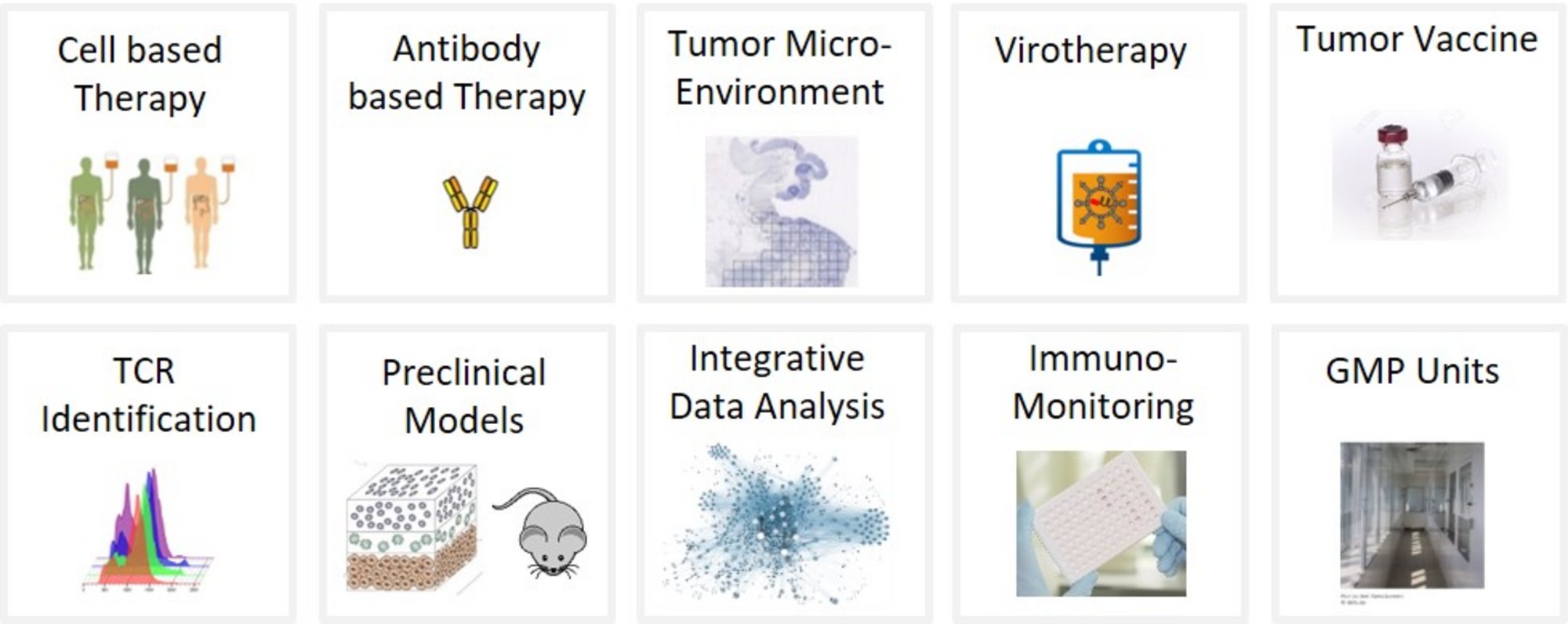Immunotherapy
Research – Development – Production – Therapeutic Trials
Based on a deep understanding of tumor-host immune interactions and the mechanisms tumors use to evade immunity, the NCT develops strategies to re-induce tumor immunity. This includes strategies to modulate the tumor environment, strategies to actively guide T cells to the tumor cell, and strategies to enhance host immunity by vaccination, by immunovirotherapy with oncolytic viruses, or by reinfusion of potent effectors such as autologous antigen-specific T cells, chimeric antigen receptor transduced (CAR) T cells, or T cell receptor (TCR) transduced T cells. Fully human, fully immunocompetent tumor models have been developed at the NCT that help to test such strategies preclinically and to identify potential mechanisms of resistance.
The NCT Immunotherapy Program focusses on enhancing tumor immunity, and includes the following areas:
- development of bispecific antibodies for tumor immunotherapy
- applied tumor immunity and combination strategies (validation of immunotherapeutic antibody constructs, immunomodulators and gene-transduced autologous T cells on patient material)
- analysis of the tumor microenvironment
- development of oncolytic viruses encoding immunostimulatory proteins for targeted activation of the immune tumor microenvironment and vaccination against patient-specific tumor antigens (immunovirotherapy)
- computer-based algorithms and integrated data analysis in tumor immunology
- GMP production (unit for the manufacturing of peptide vaccines, support of regulatory processes to obtain manufacturing authorization for cellular products)
- Further essential technologies and resources including DNA vectors for cancer therapy and mass spectrometry
The overall aim is to develop novel immunotherapeutic constructs, evaluate them immediately in a preclinical setting and transfer them into clinical trials. The medium-term goal is to further strengthen the networking of the different units for the development of active substance/target structures in cancer immunotherapy. Several of our activities can be found here.








